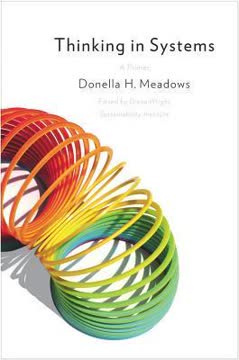Key Takeaways
1. Aikido: A Revolutionary Martial Art of Harmony and Love
Aikido is not a technique to fight with or defeat the enemy. It is the way to reconcile the world and make human beings one family.
A unique approach to conflict. Aikido, founded by Morihei Ueshiba, stands apart from other martial arts in its philosophy and practice. Rather than focusing on defeating an opponent, aikido emphasizes harmony, love, and reconciliation. This revolutionary approach transforms the traditional notion of self-defense into a path of personal and spiritual growth.
Physical and spiritual dimensions. The art combines physical techniques with a profound spiritual philosophy. Practitioners learn to redirect an attacker's energy, blending with it rather than opposing it directly. This physical practice serves as a metaphor for dealing with conflicts in all aspects of life, encouraging practitioners to seek peaceful resolutions and maintain harmony in their interactions with others.
Universal applications. The principles of aikido extend far beyond the training mat. They offer a framework for navigating personal relationships, professional challenges, and societal conflicts. By embodying the aikido philosophy of harmony and reconciliation, practitioners aim to contribute to a more peaceful and unified world.
2. Centering: The Foundation of Power and Balance in Aikido and Life
To understand this philosophy, to begin to live it, is to enter a world completely new, a world in which age-old assumptions are turned upside down: Contexts change, life's unanticipated blows become gifts, attacks lead to reconciliation, discord is transformed into harmony, anxiety and pain are reborn as vital energy.
Physical and mental alignment. Centering in aikido involves focusing one's attention and energy on the physical center of the body, located about two inches below the navel. This practice not only enhances physical balance and power but also promotes mental and emotional stability.
Transformative effects. By learning to center oneself, practitioners experience a profound shift in perspective. They become more grounded, less reactive, and better equipped to handle life's challenges. This centering practice allows individuals to:
- Maintain composure in stressful situations
- Access inner strength and resources more readily
- Improve decision-making abilities
- Enhance overall well-being and presence
Practical applications. The concept of centering can be applied to various aspects of daily life, from public speaking to conflict resolution. By returning to one's center in challenging moments, individuals can approach situations with greater clarity, confidence, and effectiveness.
3. Ki: The Mysterious Energy that Enhances Performance and Connection
Ki is exceedingly complex, and we must risk our lives to master it.
Understanding ki. Ki, often described as life energy or universal force, is a central concept in aikido and many Eastern philosophies. While scientifically elusive, ki is experienced by practitioners as a tangible force that enhances physical and mental performance.
Manifestations of ki. In aikido, ki is believed to manifest in various ways:
- Increased physical strength and resilience
- Enhanced awareness and intuition
- Improved ability to connect with others
- Greater capacity to influence one's environment
Developing ki. Practitioners work to cultivate and direct ki through various exercises and techniques. These include:
- Breathing exercises
- Meditation and mindfulness practices
- Physical movements designed to enhance energy flow
- Intentional focus and visualization techniques
By developing their understanding and use of ki, aikidoists aim to achieve a higher level of performance and a deeper connection with themselves and others.
4. Blending: Transforming Conflict into Harmony Through Empathy
Don't deny the reality of the problem. Continue to deal with it. But do so from a calm, relaxed center that represents the true strength of the organization.
The art of harmonizing. Blending, a fundamental principle in aikido, involves moving with an attacker's energy rather than opposing it directly. This concept extends beyond physical techniques to encompass a way of approaching conflicts and challenges in all areas of life.
Key aspects of blending:
- Empathy: Understanding the perspective of the other party
- Flexibility: Adapting one's approach to the situation
- Non-resistance: Avoiding direct opposition or confrontation
- Redirection: Guiding energy towards a positive outcome
Practical applications. The principle of blending can be applied in various contexts:
- Verbal conflicts: Using active listening and validation to defuse tension
- Business negotiations: Finding win-win solutions by aligning interests
- Personal relationships: Navigating disagreements with compassion and understanding
By mastering the art of blending, individuals can transform potentially adversarial situations into opportunities for mutual understanding and growth.
5. Zanshin: Cultivating Continuous Awareness for Alertness and Presence
Zanshin is the future, but zanshin is also now. The quality of your zanshin is the quality of your aikido.
Heightened awareness. Zanshin, or "continuing awareness," is a state of relaxed alertness and readiness. In aikido, it refers to maintaining awareness of one's surroundings and potential threats, even after completing a technique.
Benefits of zanshin:
- Improved reaction time and decision-making
- Enhanced situational awareness
- Greater presence in daily life
- Reduced susceptibility to surprises or attacks
Cultivating zanshin. Practitioners develop this state of continuous awareness through:
- Mindfulness practices
- Attention training exercises
- Scenario-based training
- Integrating awareness into daily activities
By developing zanshin, individuals not only improve their martial arts skills but also enhance their overall quality of life, becoming more present, alert, and engaged in every moment.
6. Taking the Hit as a Gift: Turning Adversity into Opportunity
The realization had come to me that I was gaining enough new ki from the hit not only to solve the book problem but also to have plenty left over for making some long-overdue changes in my life.
Reframing challenges. This principle teaches practitioners to view setbacks, criticisms, and difficulties as opportunities for growth and transformation. By recontextualizing negative experiences, individuals can harness the energy of adversity to fuel positive change.
Steps to transform adversity:
- Acknowledge and experience the initial emotional impact
- Center oneself and ground the energy
- Recognize the additional energy generated by the "hit"
- Channel this energy towards constructive purposes
Real-world applications. This approach can be applied to various life situations:
- Professional setbacks: Using rejection or failure as motivation for improvement
- Personal conflicts: Transforming arguments into opportunities for deeper understanding
- Health challenges: Viewing illness as a catalyst for lifestyle changes
By adopting this mindset, practitioners learn to navigate life's challenges with resilience and optimism, finding opportunities for growth in even the most difficult circumstances.
7. The Marriage of Practice and Play: Mastering Skills Through Joyful Dedication
To learn anything significant, to make any lasting change in yourself, you must be willing to spend most of your time on the plateau.
The power of consistent practice. Mastery in aikido, as in any discipline, comes through dedicated, long-term practice. However, this practice need not be a grueling chore. By approaching practice with a playful attitude, practitioners can maintain motivation and find joy in the journey.
Key elements of effective practice:
- Consistency: Regular, sustained effort over time
- Mindfulness: Full engagement in the present moment
- Patience: Acceptance of plateaus and slow progress
- Curiosity: An exploratory, experimental approach to learning
Balancing discipline and enjoyment. The most effective practice combines structure and spontaneity. By finding ways to make practice enjoyable, practitioners are more likely to persist through challenges and continue growing over the long term.
8. Protecting the Attacker: A Radical Approach to Conflict Resolution
Love of the enemy is a very strict love. Sometimes, for the protection of others, that love means destruction.
A compassionate philosophy. One of aikido's most radical principles is the idea of protecting one's attacker. This approach challenges traditional notions of self-defense and encourages practitioners to seek resolutions that minimize harm to all parties involved.
Practical implications:
- Using minimal force necessary for self-defense
- Seeking to control rather than injure an aggressor
- Looking for opportunities to de-escalate conflicts
- Cultivating empathy and understanding for potential attackers
Broader applications. This principle extends beyond physical confrontations to inform approaches to conflict resolution in various contexts:
- Interpersonal conflicts: Seeking win-win solutions
- Social issues: Addressing root causes of violence and aggression
- International relations: Pursuing diplomatic solutions to disputes
By embracing this principle, practitioners work towards creating a more compassionate and harmonious society.
9. Optimism: The Aikido Philosophy for a Positive Life Outlook
Aikido is nonresistance. As it is nonresistance, it is always victorious.
The power of positive thinking. Aikido's philosophy encourages practitioners to adopt an optimistic outlook on life. This optimism is not naive or unrealistic but rather a conscious choice to approach challenges with confidence and creativity.
Benefits of optimism:
- Improved resilience in the face of adversity
- Enhanced problem-solving abilities
- Greater overall well-being and life satisfaction
- Increased likelihood of positive outcomes
Cultivating optimism. Practitioners can develop a more optimistic mindset through:
- Reframing negative situations in a more positive light
- Focusing on solutions rather than problems
- Practicing gratitude and appreciation
- Surrounding oneself with supportive, positive influences
By embracing optimism, aikido practitioners not only improve their martial arts practice but also enhance their overall quality of life and ability to navigate challenges.
10. Walking as Meditation: Integrating Aikido Principles into Daily Life
Let's do some aikido; that is to say, let's take a walk.
Mindful movement. Aikido principles can be applied to everyday activities, with walking serving as an accessible and powerful form of moving meditation. By bringing awareness and intention to the simple act of walking, individuals can cultivate presence, balance, and centeredness in their daily lives.
Key elements of "aikido walking":
- Grounding: Feeling a strong connection to the earth
- Centering: Focusing attention on the physical center of the body
- Breath awareness: Coordinating breath with movement
- Posture: Maintaining an upright, relaxed alignment
- Zanshin: Cultivating continuous awareness of surroundings
Benefits of practice. Regular practice of mindful walking can lead to:
- Improved physical balance and coordination
- Enhanced mental clarity and focus
- Reduced stress and anxiety
- Greater overall sense of well-being and connection to the environment
By integrating aikido principles into everyday activities like walking, practitioners can extend the benefits of their training far beyond the dojo, transforming ordinary moments into opportunities for growth and self-discovery.
Last updated:
FAQ
What's "The Way of Aikido: Life Lessons from an American Sensei" about?
- Overview: The book explores the philosophy and practice of Aikido, a martial art that emphasizes harmony and non-resistance. It is written by George Leonard, an American sensei with decades of experience.
- Philosophical Approach: Aikido is presented as a way to reconcile the world and make human beings one family, focusing on love and harmony rather than conflict.
- Practical Applications: The book discusses how Aikido principles can be applied to everyday life, including stress management, conflict resolution, and personal growth.
Why should I read "The Way of Aikido: Life Lessons from an American Sensei"?
- Life Lessons: The book offers valuable insights into living a balanced, centered, and harmonious life, applicable to both martial artists and non-practitioners.
- Unique Perspective: Written by an American sensei, it provides a Western perspective on an Eastern martial art, making it accessible to a broader audience.
- Practical Exercises: It includes exercises and techniques that readers can apply to improve their physical, emotional, and spiritual well-being.
What are the key takeaways of "The Way of Aikido: Life Lessons from an American Sensei"?
- Harmony and Non-Resistance: Aikido teaches the importance of blending with an attack rather than opposing it, which can be applied to verbal and psychological conflicts as well.
- Centering and Balance: The book emphasizes the importance of being centered and balanced, both physically and mentally, to navigate life's challenges effectively.
- Transformative Power of Practice: Consistent practice, whether in martial arts or daily life, leads to mastery and personal growth.
How does George Leonard define Aikido in "The Way of Aikido: Life Lessons from an American Sensei"?
- Harmony Spirit Way: Aikido literally means "harmony spirit way," focusing on harmonizing with the spirit of the universe.
- Non-Violent Philosophy: It is a martial art that seeks to protect rather than harm, aiming for peace and reconciliation.
- Practical and Mystical: While deeply spiritual, Aikido is also practical, with applications in various aspects of life, from personal relationships to professional settings.
What are the best quotes from "The Way of Aikido: Life Lessons from an American Sensei" and what do they mean?
- "True victory is not defeating an enemy. True victory gives love and changes the enemy's heart." This quote emphasizes the transformative power of love and understanding over conflict and aggression.
- "Aikido is not a technique to fight with or defeat the opponent. It is the way to reconcile the world and make human beings one family." This highlights Aikido's ultimate goal of creating harmony and unity among people.
- "To be centered is to say yes to life." This underscores the importance of being grounded and present, allowing one to embrace life's challenges and opportunities fully.
How can the principles of Aikido be applied to everyday life according to George Leonard?
- Verbal Blending: Just as in physical Aikido, blending with verbal attacks can lead to more harmonious interactions and conflict resolution.
- Centering in Crisis: Being centered helps maintain composure and balance during times of crisis, enabling better decision-making.
- Transforming Challenges: The book teaches how to view life's challenges as opportunities for growth and transformation, using the energy of adversity to fuel positive change.
What is Leonard Energy Training (LET) as described in "The Way of Aikido: Life Lessons from an American Sensei"?
- Mind-Body Exercises: LET consists of exercises inspired by Aikido, designed for those who may never take up a martial art.
- Stress and Anxiety Management: The exercises help individuals deal with stress, anxiety, and pain, creating positive outcomes from negative situations.
- Wider Application: LET has been introduced to over fifty thousand people, demonstrating its effectiveness beyond the dojo.
What does George Leonard say about the role of practice in achieving mastery in "The Way of Aikido: Life Lessons from an American Sensei"?
- Long-Term Commitment: Mastery is achieved through diligent, patient, long-term practice, not through quick fixes or shortcuts.
- Love the Plateau: Progress often comes in spurts, but most learning occurs on the plateau, where apparent progress is minimal.
- Intrinsic Joy: The joy of practice lies in the process itself, not just in the results, leading to deeper satisfaction and personal growth.
How does "The Way of Aikido: Life Lessons from an American Sensei" address the concept of ki?
- Vital Energy: Ki is described as a subtle force that permeates and extends beyond the physical body, essential for vitality and health.
- Practical Application: In Aikido, ki is used to perform techniques with seemingly effortless power, emphasizing relaxation and flow.
- Scientific Exploration: The book explores potential scientific explanations for ki, including electromagnetic fields and zero-point energy.
What is the significance of "protecting the attacker" in Aikido as explained by George Leonard?
- Radical Philosophy: Aikido teaches practitioners to protect their attackers, transforming conflict into harmony and understanding.
- Practical Techniques: On the mat, this involves using control techniques and throws that minimize harm to the attacker.
- Broader Implications: Off the mat, it encourages a mindset of empathy and reconciliation, even in verbal and psychological conflicts.
How does George Leonard describe the relationship between practice and play in "The Way of Aikido: Life Lessons from an American Sensei"?
- Interconnected Concepts: Practice and play are seen as interconnected, with both involving full engagement and joy in the process.
- Intrinsic Motivation: When approached with a playful mindset, practice becomes more enjoyable and effective, leading to better results.
- Life as Play: The book encourages readers to find the play in everyday activities, enhancing creativity and satisfaction.
What is the "Modern Samurai" code as outlined in "The Way of Aikido: Life Lessons from an American Sensei"?
- Vivid Peace: The Modern Samurai is dedicated to creating a more vivid peace, using martial principles for harmony rather than conflict.
- Traditional Virtues: Loyalty, integrity, dignity, and courage are emphasized, along with a commitment to self-mastery and service to others.
- Preparedness for Death: Being ready to die at any moment encourages living fully and without regrets, embracing life with clarity and purpose.
Review Summary
The Way of Aikido receives mostly positive reviews, with readers appreciating its blend of philosophy and memoir. Many find the book inspiring and enlightening, praising Leonard's application of aikido principles to everyday life. Some readers note the book's discussion of Ki energy as intriguing, while others find it less engaging. Critics mention the writing style as occasionally dated or self-indulgent. Overall, readers value the book for its insights into personal growth, balance, and understanding others' perspectives, even if they're not martial artists themselves.
Similar Books










Download PDF
Download EPUB
.epub digital book format is ideal for reading ebooks on phones, tablets, and e-readers.





